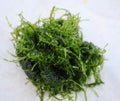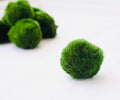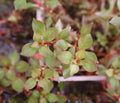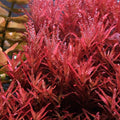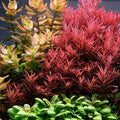20 Essential Tips for Choosing and Using Planted Tank Substrates
When it comes to setting up a planted aquarium, selecting the right substrate is a crucial step for your aquatic plants' health and growth. With numerous substrate options available, from nutrient-rich aquarium substrates to inert sands and gravels, it can be overwhelming to make the best choice.
In this comprehensive guide, we'll explore 20 valuable insights and tips about planted tank substrates to help you create a thriving aquatic environment for your aquatic plants.
1. Aquatic soils can be expensive. You can save money by not necessarily opting for a specialty aquaculture soil. Aquatic soils can release excess ammonia and nutrients, leading to potential algae issues. Be cautious and perform frequent water changes when using them.
2. To save costs, layer a more expensive substrate at the bottom and cap it with a cheaper substrate on top. Some hobbyists mix aqua soil, gravel, and sand for the base layer to strike a balance.
3. Avoid fine-grain sands, as they may hinder root development.
Use coarser sand, and consider adding a layer of gravel or pebbles underneath to allow roots to spread effectively.
4. Root tabs are essential for providing essential nutrients to your plants, especially on inert substrates. Be cautious when using terrestrial plant root tabs, as they may contain ammonia, which can harm your aquatic ecosystem.
5. If you have a damaged substrate that has depleted its nutrients, freeze chunks of organic soil and reintroduce them to the substrate to replenish nutrients.
6. Different plants require specific planting methods. Research the preferred planting depth and method for each species. Try planting at a 45-degree angle to ensure roots anchor well in the substrate.
7. Use tweezers to plant your aquatic plants to avoid disturbing the substrate and causing plants to float away. Planting at an angle can also help prevent floating issues.
8. For delicate carpeting plants with weak roots, consider planting them within baskets or rock walls in the substrate to prevent floating.
Secure Carpeting Plants:
9. Use sewing thread to anchor carpeting plants to stones or mesh. This ensures they stay in place while they root and spread.
10. Proper lighting is crucial for plant growth. Ensure your aquarium receives the right amount of light to promote photosynthesis without causing excessive algae growth. Consider a timer to maintain consistent lighting periods.
11. Carbon dioxide (CO2) injection can significantly boost plant growth. Monitor CO2 levels to ensure your plants receive an adequate supply.
12. Use liquid or substrate fertilizers to provide essential nutrients to your plants, especially if your substrate lacks nutrients.
13. Keep water parameters stable to provide a stress-free environment for your plants. Fluctuations in temperature or pH can negatively affect plant health.
14. Pruning encourages healthy growth and prevents overgrowth, which can lead to shading and poor circulation in the aquarium.
15. Frequent water changes help remove excess nutrients, waste, and algae spores, promoting a healthier aquatic environment.
16. Select plants that are suitable for your tank's size, lighting, and substrate. Research each plant's requirements before adding them to your aquarium.
17. Substrate heating cables or mats can enhance root development and nutrient absorption for your plants.
18. Overcrowding your aquarium with too many plants can lead to poor growth and unhealthy plants. Plan your aquascape carefully.
19. To prevent aggressive root growth from disrupting your aquascape, consider using root barriers made of plastic or glass.
20. Regularly test your water for pH, ammonia, nitrate, and phosphate levels to ensure they are within the appropriate ranges for your planted aquarium.
Choosing and using the right substrate for your planted tank is essential for the overall health and success of your aquatic plants. By following these 20 tips and insights, you can create a beautiful and thriving underwater garden that will be the envy of fellow aquarists. Remember to research your plant species' specific requirements and adapt your substrate choices and maintenance routine accordingly. Happy planting!



